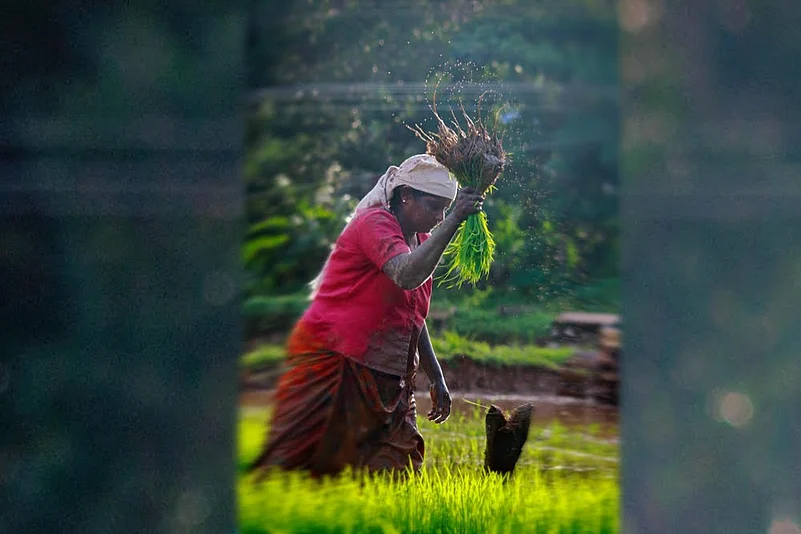Every year, the Food and Agriculture Organization (FAO) announces a theme for the World Food Day. The theme this year is, “Our Actions are Our Future: Healthy Diets for a #ZeroHunger World.” Zero Hunger is also the target of Sustainable Development Goal (SDG) 2 that calls for ending hunger, achieving food security and improved nutrition and promoting sustainable agriculture.
It is pertinent that agriculture is looped in here, for agriculture is the source of food, and what we eat is dependent on where it comes from and how it is grown or manufactured. Leveraging agriculture for nutrition is a potential pathway to zero hunger. This is especially so among populations where a large majority depend on agriculture and allied activities and is also faced with the challenge of malnutrition. According to FAO’s Report on State of Food Security and Nutrition in the World, 2019, a little over 820 million people were suffering from hunger in 2018, corresponding to about one in every nine people in the world; and from a total of 2 billion people suffering from food insecurity, 52 per cent are in Asia; South Asia and India house a large population of malnourished people.
Advertisement
According to the recently released Comprehensive National Nutrition Survey (CNNS), 35 per cent children under 5 years of age are stunted, 33 per cent are underweight, and 41 per cent children 1-4 years of age are anaemic. The first thousand days especially are a crucial window to address growth in children, bringing into focus the diets of pregnant women and young children. As per the CNNS, only about 21 per cent children 6-23 months old have minimum dietary diversity in their meal, in terms of receiving food from four or more food groups. Nutrition surveys in India have shown that diets of our people largely tend to be cereal dominated with consumption of all other food groups being at less than the recommended level. Both the need for awareness on feeding practices and having the wherewithal to do so, are determining factors here.
Advertisement
The Global Nutrition Report 2018 called for urgent attention to improve diets, to end malnutrition in all its forms. Following a systematic review of 44 studies on nutrition sensitive agriculture published since 2014, Ruel et al (2018) concluded that: “Agriculture should focus on improving dietary diversity and high quality diets as precursor to better nutrition outcomes”.
The M S Swaminathan Research Foundation (MSSRF) led a multi-country multi-institutional research programme consortium - Leveraging Agriculture for Nutrition in South Asia (LANSA) from 2012-2018, to examine how agriculture and agri-food systems can be better designed to advance nutrition. It undertook a feasibility study in India of a farming system for nutrition (FSN) approach to address the problem of under nutrition. The thrust of the FSN design was on increasing availability of nutrient dense crops, viz. millets and pulses, promoting nutrition gardens of fruits and all three groups of vegetables, promoting access to animal foods—e.g. poultry and fishery, and nutrition awareness across the board on the nutrient content of different foods, the requirement across different phases of the lifecycle from infancy to old age, and the importance of eating right. Following sustained intervention over a period of three years, there was evidence of increased intake of all food groups in terms of both quantity and frequency. Production diversity accompanied by better nutrition awareness translated to household consumption diversity.
Given that a majority of our farmers are small and marginal with 85 per cent of land holdings being less than 2 hectare in area, and more than half the workforce is engaged in agriculture and allied activities, the FSN approach can help address household food and nutrition security of this segment. For the landless, while interventions like poultry and goatery can help in terms of both income and access, there is need to ensure availability of nutrient rich food foods in the market at affordable price. This calls for promotion of decentralised nutrition sensitive agri-food value chains and local industry.
Advertisement
Healthy diets for a zero hunger world calls for the convergence of multiple sectors under one umbrella to address the problem. Mainstreaming the nutrition dimension in agriculture has to be a key aspect of this convergence and should be made an integral part of Poshan Abhiyan. Together with production and productivity, agriculture has to talk nutrition and both the agriculture university system and extension officials have to be sensitised in this direction. The Indian agriculture research system has developed a number of biofortified varieties of different crops, like zinc fortified rice and iron fortified wheat. There is however as yet no clear policy for their promotion. Thrust on growing and consuming fruits and vegetables has to be accompanied by availability of low-cost technologies for preservation and value addition at local level. Nutrition gardens in schools can help provide fresh produce for the midday meal as well as serve as a mechanism to create awareness among school children about the nutrient content in different fruits and vegetables. Women’s groups can be facilitated under the Mahatma Gandhi National Rural Employment Guarantee Scheme (MNREGS) to manage nutrition gardens on common land in villages. Preserving the local biodiversity of plants and animals also has an important role in healthy diets. The targets under SDG2 therefore include conservation of genetic diversity, sustainable food production and resilient agricultural practices.
Advertisement
While there is the challenge of undernutriton to be addressed, India today is also seeing the manifestation of the problem of over nutrition; awareness on healthy diets has to become a mantra to be promoted across the board, targeting all segments of the population, urban and rural. Media and our educational institutions have to spearhead this movement.
------------------------------------
R V Bhavani is the Director, Agriculture Nutrition Health Programme, of the M S Swaminathan Research Foundation
------------------
Photo credit: Nandhu Kumar, Unsplash Photo Community




















